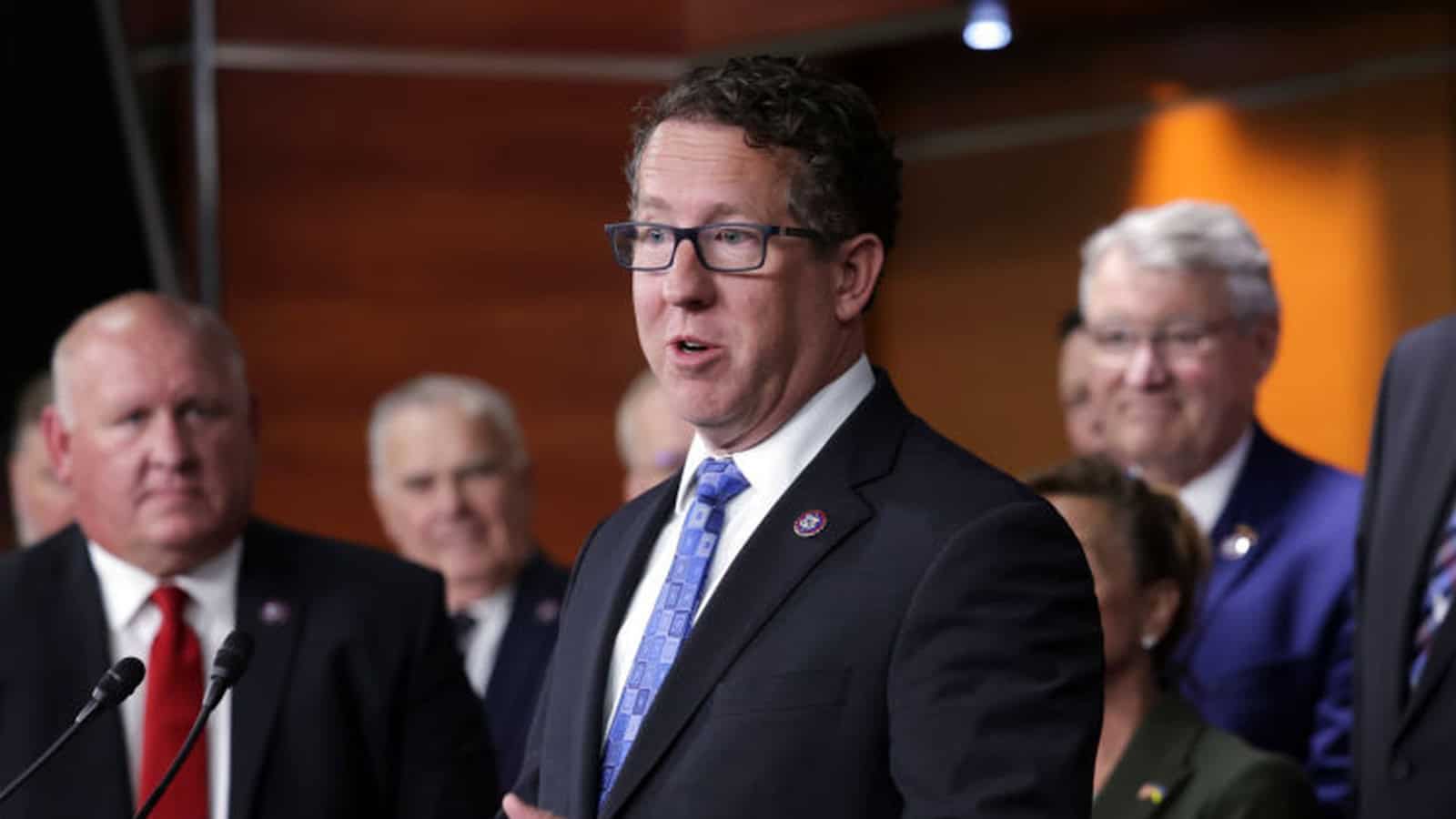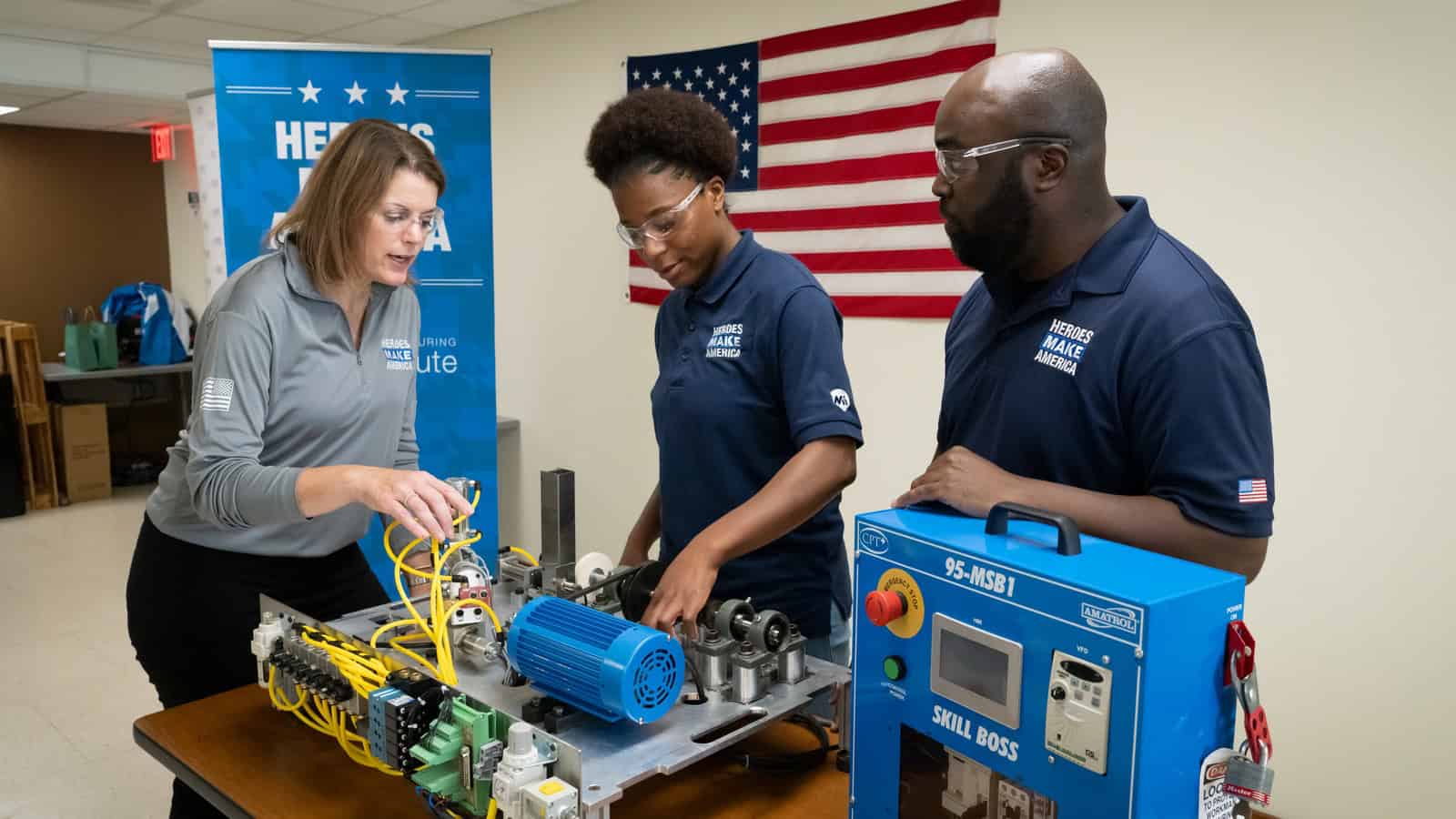Q3 GDP Driven by Consumer and Government Spending, While Housing Lags
Real GDP grew at an annual rate of 2.8% in the third quarter of 2024, down slightly from 3.0% in the second quarter and below consensus expectations of 3.1% growth. Growth during the quarter was driven by increases in consumer spending, exports and government spending.
Consumer spending grew at an annual rate of 3.7%, with both spending on goods (up 6.0%) and services (up 2.6%) contributing to the gain. Consumer spending on nondurable goods, led by prescription drug spending, rose a strong 4.9%, while spending on durable goods, led by motor vehicles and parts spending, showed more significant growth at 8.1%. Within services, spending on health care and food services and accommodations were the largest contributors to the increase. The increase in exports (up 8.9%) primarily reflected an increase in capital goods exports, excluding automotive, while the increase in federal government spending (up 9.7%) was led by defense spending (up 14.9%).
The drags on growth came from residential fixed investment, which decreased 5.1% in the third quarter, and a downturn in private inventory investment. Nonresidential fixed investment exhibited healthy growth of 3.3%, with a key driver being business spending on equipment, which rose 11.1%. A large portion of this gain was from investment in transportation equipment, which also contributed positively to GDP in the previous quarter.
Manufacturing Contraction Slows but Demand Weakness Persists Across Markets
In October, U.S. manufacturing remained in contraction but at the slowest pace in three months. The S&P Global U.S. Manufacturing PMI rose to 48.5 in October from 47.3 in September, remaining below the 50 threshold that indicates a contraction in the sector. This suggests manufacturing conditions continued to deteriorate but to a lesser extent than the previous month.
Output and new orders fell at slower rates in October, with political uncertainty cited as the key reason for the drop in new orders. Despite new orders continuing to fall, manufacturers scaled back production to the smallest degree in three months. However, manufacturers continued to reduce employment and purchasing activity.
New export orders also declined slightly but to a much lesser degree than total new business, as demand weakness was notable in Europe. Weaker sales led manufacturers to reduce output for the third consecutive month. While respondents’ optimism about future business conditions strengthened, the current demand slump has resulted in firms continuing to lower their employment levels and purchasing activity as we enter the final quarter of the year.
The pace of inflation eased slightly, with input costs increasing at the slowest pace in almost a year and output price inflation also easing. Where input prices increased, respondents reported higher costs for freight and raw materials, such as cardboard, metals and packaging.
Manufacturing Sector Weakens as October PMI Drops to Yearly Low
In October, the U.S. manufacturing sector contracted for the seventh consecutive month, with the Manufacturing PMI falling to its lowest reading in 2024 at 46.5%, indicating activity was contracting at a faster pace. New orders (47.1%), production (46.2%), inventories (42.6%) and backlog of orders (42.3%) remained in contraction, with production, inventories and backlog of orders at faster rates of decline. Supplier deliveries are still slowing, and demand continued to be weak, with companies hesitant to invest due to uncertainty about the direction of federal monetary policy as it relates to the election.
The New Orders Index continued its contraction for the seventh consecutive month but is up 1.0 percentage point from September. This decline reflects ongoing uncertainty and concern about a lack of new order activity, with only two major sectors−computer and electronic products and food, beverage and tobacco products−reporting an increase in new orders. While their confidence in the future economic environment remains low, it ticked up slightly in October.
The Production Index remained in contraction in October and is down 3.6 percentage points from September. Of the six largest manufacturing sectors, three (computer and electronic products; food, beverage and tobacco products; and fabricated metal products) reported increased production.
The Employment Index inched up 0.5 percentage points from September, still among the lowest readings since July 2020. Companies continued to reduce headcounts through layoffs, attrition and hiring freezes, with only the food, beverage and tobacco products and machinery sectors expanding employment in October.
The Prices Index rose 6.5 percentage points to 54.8%, indicating raw materials prices increased in October after decreasing the month before. Energy and transportation costs were the primary drivers, with crude oil and natural gas increasing somewhat, offset by weakness in the steel markets. Approximately 20% of companies reported paying higher prices, compared to 13% in September.
Hiring Rises Slightly Despite Drop in Job Openings
In September, the number of job openings fell to 7.4 million, a decrease of 418,000 from the previous month and 1,864,000 from the previous year. The job openings rate decreased to 4.5%, down from 4.7% in August and 5.6% last year. This is the lowest level of job openings since January 2021 and another sign of a slowing labor market.
Job openings for manufacturing dropped by 10,000 to 481,000 in September, with the decrease of 15,000 job openings in nondurable goods outweighing the increase of 6,000 job openings in durable goods. The manufacturing job openings rate fell to 3.6%. The rate for durable goods manufacturing increased from 3.8% to 3.9%, while it decreased from 3.4% to 3.1% for nondurable goods.
The number of hires rose to 5.6 million from 5.4 million in August but are down 293,000 from the previous year. The hires rate edged up 0.1% to 3.5%. Meanwhile, the hires rate for manufacturing increased 0.4% to 2.8%. The hires rate for durable and nondurable goods rose to 2.6% and 3.0%, respectively.
Total separations, which includes quits, layoffs, discharges and other separations, rose 28,000 from August to 5.2 million but are down 326,000 from the previous year. The total separations rate stayed the same at 3.3% but rose to 2.9% from 2.5% for manufacturing. Within that rate, layoffs and discharges rose in September, while quits fell. The quit and layoff rates continue to remain lower for manufacturing than the total nonfarm sector.
Unemployment Holds Steady as Payroll Growth and Participation Dip
Nonfarm payroll employment increased by a measly 12,000 in October, impacted by Hurricanes Helene and Milton and strike activity. August and September job gains were also revised downward by 112,000 jobs. The 12-month average stands at 181,000 job gains per month. Manufacturing employment, however, declined by 46,000, largely influenced by the Boeing strike. In addition, August and September manufacturing job losses were revised downward by 2,000. The unemployment rate stayed the same at 4.1%, while the labor force participation rate dipped 0.1% to 62.6%.
The employment-population ratio fell slightly to 60.0% and is down 0.3 percentage points from a year ago. Employed persons who are part-time workers for economic reasons decreased by 67,000 to 4.56 million but are up from 4.28 million in October 2023. Native born employment is up over the month but down 773,000 over the year. Meanwhile, foreign born employment is down over the month but up 1,034,000 over the year.
Average hourly earnings for all private nonfarm payroll employees rose 0.4%, or 13 cents, reaching $35.46. Over the past year, earnings have grown 4.0%. The average workweek for all employees remained at 34.3 hours in October.
Q&A: Rep. Smith on Averting “Tax Armageddon”

The NAM recently interviewed Rep. Adrian Smith (R-NE) about the actions that he and congressional colleagues are taking to fight a looming “Tax Armageddon.” The full text is below.
NAM: Rep. Smith, Congress is facing a “Tax Armageddon” next year, as crucial provisions from 2017’s Tax Cuts and Jobs Act are set to expire. As a member of the House Ways and Means Committee, what is your focus moving into next year’s debate?
Smith: The 2017 cuts unleashed economic growth, promoted American business investment and benefitted workers more meaningfully than any policy reforms in a generation. Leading the Ways and Means Rural America Tax Team and as a member of the Main Street Tax Team, I am working hard to gather input from stakeholders, job creators and drivers of our nation’s growth potential. Manufacturing is an overlooked component of rural economies, and Americans know tax policy must encourage investment in their communities.
NAM: As you know, prior to 2022, businesses could deduct 30% of earnings before interest, tax, depreciation and amortization—a deduction standard known as EBITDA. A change in the tax code limits the deduction to only EBIT—excluding depreciation and amortization. This presents an added cost for businesses taking out loans to finance large capital investments in their facilities and equipment and disproportionately impacts the manufacturing sector. What are you doing to correct this policy?
Smith: American manufacturers are already suffering under inflation, a worker shortage and a sustained high-interest environment in the United States. Bipartisan legislation I have introduced, the AIM Act, would amend the U.S. tax code to increase the cap on deductible business interest to pre-2022 levels. By ensuring capital-intensive industries can deduct more of the cost of interest from their taxes, we can enhance opportunities to develop new products in America, create jobs by making those products here and then sell those products around the world.
NAM: Congressman, you were on the Ways and Means Committee during passage of the TCJA in 2017, so you know how impactful the legislation was for manufacturers to be able to compete on a global level. As we get closer to next year, what are you hearing from stakeholders on the need for pro-growth tax policy so American businesses can engage and grow around the world?
Smith: Ensuring our tax code reflects the cost of doing business is essential for American manufacturing to compete in the global market. Prior to 2017, even President Obama realized our tax code was making American businesses less competitive. The fact there have been no major corporate inversions since passage of the TCJA is a remarkable testament to commonsense policy. Businesses we have heard from widely agree on the importance of keeping these policies in place and sustaining our strong growth.
NAM: Thank you, Rep. Smith. What else can NAM members do to stay engaged and be a resource for you going into next year?
Rep. Smith: Contacting my office with your feedback and how you have been impacted by the TCJA is always welcome. Continue to share stories about why growth-centered tax policies are key to your success and how you would change course should they expire. Together, we can maximize productivity and growth through a tax code that is a net benefit to all.
Rep. Smith on Averting “Tax Armageddon”

Rep. Adrian Smith (R-NE) is fighting a looming “Tax Armageddon”—the expiration of crucial pro-manufacturing tax measures scheduled for the end of 2025. As part of its “Manufacturing Wins” campaign, the NAM recently chatted with Rep. Smith—chair of the House Ways and Means Committee’s Rural America Tax Team and a member of the committee’s Main Street Tax Team—about how he and his colleagues are working to avert the potential disaster.
Interest deductibility: One of Rep. Smith’s priorities is restoring a pro-growth standard for interest deductibility. In 2022, a new limitation took effect, setting a stricter cap on how much interest manufacturers can deduct, and thereby increasing the cost of debt financing job-creating investments.
- “Bipartisan legislation I have introduced—the American Investment in Manufacturing Act—would amend the U.S. tax code to increase the cap on deductible business interest to pre-2022 levels,” Rep. Smith told the NAM.
- “By ensuring capital-intensive industries can deduct more of the cost of interest from their taxes, we can enhance opportunities to develop new products in America, create jobs by making those products here and then sell those products around the world.”
Preserving tax reform: By restoring tax reform’s lapsed provisions—including interest deductibility—and preserving policies scheduled to expire next year, Congress can build on the success of the Tax Cuts and Jobs Act, which “unleashed economic growth, promoted American business investment and benefitted workers,” Rep. Smith said.
- “Businesses we have heard from widely agree on the importance of keeping these policies in place and sustaining our strong growth.”
Heroes MAKE America Is Growing

Manufacturers employ more veterans than any other private industry, with roughly 980,000 veterans working in manufacturing in 2023. That is an encouraging number, yet there are still many more veterans who remain untapped by the manufacturing industry. And manufacturers need them: with 481,000 open jobs in the sector, companies have much to gain by exploring this promising talent pool.
That’s where the Manufacturing Institute’s Heroes MAKE America initiative comes in. Since its launch in 2018, it has assisted more than 42,000 members of the military community who are looking for their next career. Now, Heroes is expanding its reach via collaborations with the U.S. Department of Labor and Walmart, which will further boost manufacturers’ access to this skilled and dedicated workforce.
Walmart.org: Heroes’ collaboration with Walmart.org began in 2022, when Walmart funded the development of a model that translates military-acquired skills into competencies that are recognized by employers in the manufacturing industry, enhancing veterans’ visibility to employers.
- The project built, tested and evaluated a platform that allows military-connected individuals to showcase their qualifications through verifiable digital badges.
- This approach helps civilian employers recognize the skills of service members and veterans, making it easier for these job seekers to transition into high-demand roles while enhancing workforce readiness.
- New funding from Walmart.org will further expand the translation of military skills, painting fuller pictures of job seekers’ abilities and exploring avenues to increase the usage and acceptance of digital skills and badging systems, both among users and employers.
DOL: In June, the U.S. Department of Labor announced that Heroes would become a partner of the Veterans’ Employment and Training Service’s Employment Navigator & Partnership Program, which provides transitioning service members and their spouses with personalized employment assistance.
- Through its partnership with ENPP, Heroes will extend its reach to 36 additional military installations worldwide, significantly expanding its role as a premier employment resource for the military community.
The MI says: “Our existing offerings coupled with added valuable collaborations with Walmart.org and DOL will help Heroes connect more manufacturers with military talent, supplying them with qualified, dedicated workers who will strengthen manufacturing in America for decades to come,” said MI President and Executive Director Carolyn Lee.
Interested in learning more? Check out the HMA website, follow HMA on LinkedIn or send an email to [email protected].
Q&A: Rep. Morelle on Interest Deductibility

The NAM recently talked to Rep. Joe Morelle (D-NY) about what he and his congressional colleagues are doing to help manufacturers debt finance important projects. Below is the full text of the interview.
NAM: Rep. Morelle, Congress is facing a “Tax Armageddon” next year, as crucial pro-growth tax policies are set to expire at the end of 2025, and as you know, many have gone into effect already. What is your focus moving into next year’s debate?
Morelle: With provisions of the Tax Cuts and Jobs Act of 2017 set to expire, it is imperative that Congress acts to safeguard tax policies that support and strengthen American manufacturing. My focus remains on measures that enhance our economic resilience and competitiveness for families and small businesses alike. This commitment drives my introduction of the American Investment in Manufacturing Act, which aims to restore the deductible business interest cap to pre-2022 levels, encouraging vital domestic investment while mitigating the pressures of rising interest.
NAM: As you know, prior to 2022, businesses could deduct 30% of earnings before interest, tax, depreciation and amortization—a deduction standard known as EBITDA. A change in the tax code limits the deduction to only EBIT—excluding depreciation and amortization. This presents an added cost for businesses to take out loans to finance large capital investments in their facilities and equipment and disproportionately impacts the manufacturing sector. What are you doing to correct this policy?
Morelle: This year, I had the privilege of voting to advance the Tax Relief for American Families and Workers Act in the House of Representatives. This bipartisan legislation represents significant progress by expanding the Low-Income Housing Tax Credit, enhancing the Child Tax Credit and incorporating the AIM Act—my own legislative initiative to reinstate the EBITDA deduction standard. Reestablishing this deduction is essential to addressing the current tax code’s disproportionate burden on our manufacturing sector, which relies on loans for substantial investments in critical infrastructure and equipment. I remain committed to reintroducing the AIM Act in the upcoming Congress and to restoring the EBITDA deduction to ensure the continued strength of American manufacturing.
NAM: Correcting this policy would promote further domestic investment while helping address concerns about rising interest rates. As we get closer to next year, what are you hearing from stakeholders on the need for pro-growth tax policy so American businesses can engage and grow around the world?
Morelle: In today’s increasingly competitive global economy, American manufacturing is indispensable to expanding our workforce, enhancing competition and securing long-term economic growth. Unfortunately, the United States stands alone among OECD countries in applying an EBIT-based limitation, placing our industries at a competitive disadvantage. A return to the full EBITDA deduction would significantly enhance U.S. competitiveness and bolster economic prosperity. I am particularly proud that my district of Rochester, New York, was recently designated a Regional Innovation and Technology Hub by the Biden administration—a recognition that strengthens our community’s role in leading the manufacturing sector. As we approach the expiration of the TCJA, I am committed to championing pro-growth tax policies that uplift working families and drive innovation at both local and national levels.
NAM: Thank you, Rep. Morelle. Is there anything else you’d like to share with readers?
Morelle: As we prepare for the new Congress, I am committed to standing with American manufacturers and collaborating with NAM members to advance pro-growth solutions that drive our economy and support our shared vision.
NAM to Commerce: Security, Competitiveness Go Together

Manufacturers agree that the U.S. should address the potential national security and privacy risks associated with connected vehicles—those that use technologies to communicate with each other and other systems. But “[n]ational security, privacy and economic strength can be pursued in conjunction with one another,” the NAM told the Commerce Department this week.
What’s going on: In September, the Commerce Department’s Bureau of Industry and Security proposed rules to ban connected vehicles that integrate information and communications technology from China and Russia (POLITICO).
- While manufacturers support safeguarding efforts, “[o]ur competitiveness also requires national security challenges to be addressed through proportionate actions … [that] do not unduly hinder” American manufacturing, NAM Managing Vice President of Policy Chris Netram told BIS on Monday.
- The rule’s software prohibitions would go into effect for vehicles model year 2027, while the hardware regulations would take effect for vehicles model year 2030. The NAM is asking BIS to discuss with stakeholders whether they need more time to comply, given the length of the automotive design and development cycles.
What it could do: If finalized, the rule would require automotive manufacturers using Chinese or Russian technology to find new suppliers.
The problem: “Automotive supply chains are highly complex, with [information and communications technology and services] embedded in the products of many sub-suppliers who sell to automotive original equipment manufacturers,” Netram continued.
- What’s more, information and communications technology and services “are foundational technologies across the manufacturing ecosystem and wider economy. As such, the rule in its current form could generate unintended consequences both within the automotive industry and across the broader ICTS supply chain, violating the department’s obligation to engage in reasoned decision making and avoid arbitrary and capricious rulemaking.”
What should happen: The NAM urged BIS to take several actions, including the following:
- Clearer definitions: Certain wording in the rule should be rephrased for clarity, including “Person Owned by, Controlled by or Subject to the Jurisdiction or Direction of a Foreign Adversary” and “Connected Vehicle.”
- Covered software: “[T]he NAM urges BIS to consider revising the proposed rule to ensure it does not require visibility into and control over the software code provided by an OEM’s tier 3 suppliers and beyond.”
- Specific authorizations: “[T]he NAM recommends that BIS issue clear guidance about what criteria the Office of Information and Communications Technology would use to review and approve the risk assessments and the measures proposed by the applicant to mitigate the risks.”
- Attestations of compliance: Allow companies “to attest to their compliance” rather than “document and demonstrate compliance” to safeguard trade secrets.
The final say: With the NAM’s recommended changes, the BIS’s draft rulemaking “will support national security and privacy while ensuring that a vibrant manufacturing industry can continue to innovate and power growth in America for years to come,” Netram concluded.
